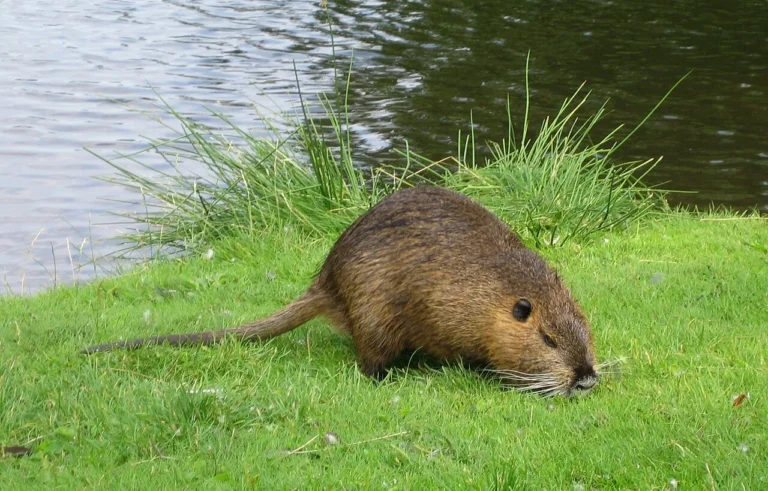Bioremediation Meaning, Mechanism, Types, Tools and Examples
Bioremediation is the use of microorganisms to breakdown, convert, transform and eliminate environmental contaminants. This article discusses bioremediation meaning, mechanism, types, tools, and examples.
-In-Situ and Ex-Situ Bioremediation
-Bioremediation and Biodegradation
-Microorganisms Used for Bioremediation
Bioremediation Meaning
Bioremediation is a biotechnical process whereby pollutants are broken down to form harmless products, through the activities of microorganisms.
The underlying mechanism of bioremediation, is biodegradation. This is what makes it possible for the toxic pollutants in a medium to be reduced, altered and transformed into harmless products [6].
There are other ways to define bioremediation;
Bioremediation is the use of living organisms like bacteria and fungi, as well as organic materials such as enzymes, to breakdown and remove environmental pollutants [5].
In bioremediation, the microorganisms which are used, may be already present in the polluted medium (that is; in place).
Otherwise, these microorganisms may be cultured in-situ, by altering the environmental conditions so as to stimulate their growth and multiplication [1], or they may be introduced into the polluted medium, from an external source.
Bioremediation is a branch of biotechnology, which uses biotechnical principles and mechanisms to treat contaminated soil, water, and air.
There are different terms which may be used to describe the removal of contaminants through bioremediation. These terms include degradation, mineralization, alteration, reduction, elimination, detoxification and transformation.
Cases where bioremediation can be applied, range from sewage pollution, to industrial effluents, heavy metal and hydrocarbon pollution.
Mechanisms of Bioremediation
The mechanism of bioremediation is comprised of microbe-stimulation (biostimulation), pollutant degradation, alteration and mineralization.
When combined, all the steps listed above will lead to an effective breakdown and removal of pollutant-matter from the environment.
1). Microbe-Stimulation
In order for bioremediation to occur, microbes (which are capable of degrading the pollutants) must be present.
The goal of stimulation is to ensure that the needed microorganisms for bioremediation, are present in the polluted medium.
There are different prospects to consider in this area.
One of them is the possibility that the needed microbes may not be present in the polluted medium (that is; the site in need of bioremediation). Another is that the microbes may be present, but not in sufficiently large numbers.
Microbe-stimulation (or biostimulation) is the optimization of environmental conditions to accommodate the required specie(s) and population size of microbes in a polluted medium.
The required microbes depend on the pollutant in question, which may be heavy metals, or hydrocarbons, among others.
Measures taken in the process of microbe-stimulation include alteration of environmental temperature, pH, and supply of nutrients for microbe growth and multiplication.
Microbe-stimulation may be carried out on the site (in-situ), or in an external environment (ex-situ).
In the case of ex-situ microbe-stimulation, the required microorganisms are usually cultured in a laboratory, and subsequently transferred to the polluted medium/site.
2). Pollutant Degradation
Pollutant degradation is the most important mechanism of bioremediation, whereby the pollutant compounds are broken down to simpler components, which can be further degraded to eliminate their harmful properties.
In pollutant degradation, the natural metabolic capability of microorganisms is utilized, to ensure that the pollutant(s) is broken down.
Various factors may affect the rate at which pollutant degradation occurs. One of these factors is the complexity of the pollutant.
The first stage of degradation will involve breaking the major bonds in the pollutant compounds. In the case of polymers (like some hydrocarbons), the polymeric bonds will be broken, to form monomers and oligomers [13].
Aside pollutant complexity, other factors affecting the rate of pollutant degradation are the size of microbe population present, the species of microbes, the degree of contact between microbes and pollutants, and the environmental conditions (temperature, humidity, salinity, pH).
The effectiveness of any pollutant-degradation mechanism heavily depends on the presence of suitable microbes in the polluted medium. This implies that pollutant-degradation will not be effective if the microbe-stimulation mechanism is not effective.
Different groups of microbes are capable of effectively degrading different types of pollutants. This makes it necessary to carefully consider the microbes that will be needed for any bioremediation project.
3). Pollutant Alteration
Also known as bioconversion or biotransformation, pollutant alteration is a mechanism of bioremediation which aims at converting toxic materials to non-toxic products.
The mechanism of pollutant alteration is similar to the method of biomass conversion to produce bioenergy.
Pollutant-alteration depends on pollutant-degradation to be effective. This is because the pollutant compounds cannot be altered or converted if they are not first broken down to simpler components.
In pollutant alteration (or bioconversion/biotransformation), various processes such as fermentation, methanogenesis, and denitrification may occur simultaneously.
The conversion of pollutants may produce liquid, solid or gaseous products. However, the most common products of this mechanism are greenhouse gases like methane and carbon dioxide.
4). Pollutant Mineralization
Pollutant mineralization or biomineralization involves the complete transformation of toxic pollutants to inorganic, less-toxic (or non-toxic) materials like water and carbon dioxide [8].
It usually takes place through biochemical processes like hydrolysis, reduction and oxidation.
Mineralization represents the ultimate outcome of bioremediation. Through this mechanism, the end-products of the entire bioremediation process become compatible with the environment.
Pollutant mineralization depends on alteration (biotransformation) to be effective, because biotransformation is the precursor to complete mineralization of pollutants.
Mineralization is important because it often produces nutrients like nitrogen which are needed to improve soil fertility and crop yield.
It also produces greenhouse gases which may be released into the atmosphere. However, bioremediation is not a major contributor to global warming or climate change.
In-Situ and Ex-Situ Bioremediation
It may also be said that the two mechanisms of bioremediation are in-situ bioremediation and ex-situ bioremediation.
The difference between in-situ and ex-situ bioremediation is the location of the remediation procedure.
-In-Situ Bioremediation
For in-situ bioremediation, the pollutants are treated within the site of pollution, using biological organisms and processes [3].

In-situ bioremediation does not require the removal of the contaminated/polluted medium (soil, air, water) from the site.
However, the microbes may be cultured in an external environment and subsequently introduced into the polluted site.
This is called bioaugmentation [11]. It is usually necessary in cases where the required microbe species and environmental conditions for bioremediation, are not present at the site.
In cases where the microbes are already present in the site, in-situ bioremediation will commence with biostimulation, by which the conditions (temperature, pH, salinity, nutrients) will be altered to encourage growth and multiplication of the microbes [2].
-Ex-Situ Bioremediation
Ex-situ bioremediation is the mechanism of bioremediation whereby the contaminated/polluted medium is removed from the site of pollution, and treated in an external environment.
The contaminated medium is usually either soil or water. Bioreactors may be used to treat these contaminated media, to speed-up the remediation process [10].

Ex-situ bioremediation is usually carried out in a variety of scenarios. Some conditions which require the use of ex-situ bioremediation include;
1). Extremely high pollutant concentration
2). Great depth of pollutant migration
3). Absence of suitable microbe species
4). Absence of suitable environmental conditions
5). Contamination/Pollution of multiple media (e.g. both soil and groundwater)
6). Unfavorable soil texture for effective spread of microbes
The following table compares in-situ and ex-situ bioremediation;
| In-Situ Bioremediation | Ex-Situ Bioremediation |
| Carried out on contaminated site | Carried out in external environment |
| Does not require dredging or excavation of polluted media | Usually requires dredging or excavation of polluted media |
| May involve biostimulation and/or bioaugmentation on the site | Microbes are usually cultures externally and later introduced into the polluted medium. Bioreactors may also be used |
| Cost of remediation project depends on size of polluted area, depth of pollution, equipment methods used, and duration of project | Cost of remediation project depends on severity of pollution, depth of excavation or dredging, volume of excavated/dredged material, treatment methods |
Bioremediation and Biodegradation
The difference between bioremediation and biodegradation, is that; while biodegradation is a natural process of microbial decomposition, bioremediation is a human-facilitated process.
In biodegradation, microorganisms locate organic matter which they breakdown and decompose in the process of feeding. On the other hand, in bioremediation; humans introduce, augment and stimulate microorganisms in order to breakdown biodegradable contaminants.
Both biodegradation and bioremediation involve the breakdown of biodegradable organic matter by microorganisms. However, biodegradation occurs spontaneously, while bioremediation is facilitated by humans through various mechanisms.
Microorganisms Used for Bioremediation
Various species of bacteria, fungi and archaea are used for bioremediation.
However, the species of microbes used in any bioremediation project will depend on the nature of pollutant, as well as the specific environmental conditions.
The following table outlines some examples of microbe species used for elimination of different types of pollutants;
| Contaminant/Pollutant | Microbes for Bioremediation |
| Hydrocarbon | Bacteria: Candida tropicalis, Acinetobacter baumannii, Pseudomonas aeruginosa, Pseudomonas arthrobacter, Pseudomonas chlororaphis, Pseudomonas putida, Mycobacterium, Corynebacterium, Renibacterium salmoninarum Rhodococcus, Gordonia, Arthrobacter |
| Heavy Metals | Bacteria; Agrobacterium spp., Xanthomonas campestris, Alcaligenes faecalis, Bacillus spp., Zygomonas mobilis, Leuconostoc, Arthrobacter spp., Pseudomonas veronii, Kocuria flava, Burkjolderia spp., Bacillus cereus
Fungi: Aspergillus versicolor, Penicillium Canescens, Aspergillus fumigatus Algae: Cladophora spp., Cladophora fascicularis, Sprirogyra spp., Spirullina spp. Yeast: Candida utilis, Saccharomyces cerevisiae |
| Sewage | Bacteria: Brevibacterium sp., Bacillus pumilus, and Pseudomonas aeruginosa |
Examples of Bioremediation
Two examples of bioremediation are the 1989 Exxon Valdez oil spill (hydrocarbon) remediation, and the industrial wastewater remediation project by [9].
Other examples of bioremediation include the microbial treatment of sewage by [7], and heavy metal bioremediation by [12].
Example 1: Hydrocarbon Pollution Treatment [4]
The 1989 Exxon Valdez oil spill hazard occurred off the coast of Alaska, and involved the spillage of about 11 million gallons of crude oil.
The polluted media included mainly soil, although water was also affected. This case of pollution is one of the pioneer cases where bioremediation has been applied.
An In-situ approach was used for treatment, whereby fertilizer was used as a stimulant for the growth and reproduction of microbes on the polluted site. This is because fertilizer contains minerals and nutrients like nitrogen, which microbes require.
Over 100,000 pounds of fertilizer was applied in numerous rounds of application across the site.
Because the pollutant in this case was hydrocarbon, the microbes which contributed to the breakdown and elimination of this pollutant included hydrocarbon-degrading bacteria like Pseudomonas spp.
The bioremediation project lasted for about three years, concluding in mid-1992.
Example 2: Industrial Wastewater Treatment [9]
Bioremediation was used for the treatment of industrial wastewater, which contained a variety of pollutants.
Most of the pollutants present where complex, polymeric compounds like 2-methoxyphenol, 4-chlorophenol, 2,4-dichlorophenol, and pentachlorophenol. The concentrations of these pollutants in the wastewater ranged from 100mg/l to 1000mg/l.
In order to effectively eliminate the pollutants, various microbes were utilized. These were mostly bacteria; prominently including species such as Rhodococcus sp., Acinetobacter sp.
The detoxification of the wastewater was achieved within about 7 days.
Example 3: Sewage Treatment [7]
Sewage wastewater was treated using three different microbial bacteria strains.
The aim of the bioremediation project was to reduce chemical oxygen demand (COD), biochemical oxygen demand (BOD), total suspended solids (TSS) and mixed liquor suspended solids (MLSS) of the sewage.
Microbes used in the experimental project were Brevibacterium sp., Bacillus pumilus, and Pseudomonas aeruginosa.
Other observatory parameters were used to assess the rate of pollutant degradation by each bacteria specie. These parameters include agitation, temperature and inoculation size.
The results of the study showed that the effectiveness of bioremediation is proportional to the size of microbe populations which are used.
Example 4: Heavy Metal Bioremediation [12]
This review addresses the strategies for bioremediation of heavy metal-contaminated sites.
It highlights the relevance of plants in bioremediation, where these plants provide a mechanism for the mobilization of contaminants (phytoextraction).
Microbes like Geobacter are useful in driving the process of sequestration (extraction and storage in plant tissues) of the heavy metals.
The assessment also showed that bioremediation can be used for elimination of heavy metals from both soil and water.
Conclusion
Bioremediation is the use of microorganisms and biological processes, to breakdown and convert toxic contaminants to less-toxic end products.
We may also define bioremediation as a branch of biotechnology that deals with the use of biodegradation to eliminate environmental pollutants.
While bioremediation and biodegradation involve the breakdown of biodegradable materials, there are slight differences between both processes.
The difference between biodegradation and bioremediation lies in the fact that biodegradation occurs naturally while bioremediation is a human-facilitated form of biodegradation.
This means that the process of biodegradation is spontaneous, whereas bioremediation involves human interference, to ensure that the required microbes are available in the required number, and under optimal conditions, so as to effectively eliminate the contaminants in question.
The mechanisms of bioremediation process include;
- Microbe-stimulation
- Pollutant degradation
- Alteration, and
- Mineralization
In some contexts, it may be said that there are two mechanisms of bioremediation, which are; in-situ and ex-situ bioremediation.
In-situ and ex-situ bioremediation mechanisms, differ in terms of where the bioremediation process occurs.
For in-situ bioremediation, contaminants are broken down on the site of contamination/pollution, while ex-situ bioremediation involves the removal (excavation or dredging) of polluted soil/water from the site, to an external environment where the contaminants are removed.
In both in-situ and ex-situ bioremediation, microorganisms may be introduced to the polluted medium from an external environment. This is called bioaugmentation.
Bioremediation can be used in a variety of pollution scenarios, to eliminate various types of contaminants. The species of microorganisms which will be suitable for any bioremediation project, depends on the type, complexity and severity of contaminants involved.
Examples of bioremediation include heavy metal remediation, hydrocarbon remediation, industrial wastewater and sewage remediation.
References
1). Abatenh, E.; Gizaw, B; Tsegaye, Z.; and Wassie, M. (2017). “The Role of Microorganisms in Bioremediation- A Review.” Open Journal of Environmental Biology. Available at: https://www.peertechzpublications.com/articles/OJEB-2-107.php. (Accessed 21 March 2022).
2). Abed, R. M. M.; Al Kharusi, S.; Al-Hinai, M. (2014). “Effect of biostimulation, temperature and salinity on respiration activities and bacterial community composition in an oil polluted desert soil.” International Biodeterioration & Biodegradation. Available at: https://doi.org/10.1016/j.ibiod.2014.11.018. (Accessed 21 March 2022).
3). Ateia M, Yoshimura C, Nasr M (2016). “In-situ Biological Water Treatment Technologies for Environmental Remediation: A Review.” J Bioremed. Biodeg. 7:348. Available at: https://doi.org/10.4172/2155-6199.1000348. (Accessed 21 March 2022).
4). Bragg, J. R.; Prince, R.; Harner, J. E.; Atlas, R. M. (1994). “Effectiveness of bioremediation for the Exxon Valdez oil spill.” Nature volume 368, pages 413–418 (1994). Available at: https://doi.org/10.1038/368413a0. (Accessed 21 March 2022).
5). Chandrakant S. Karigar, Shwetha S. Rao, (2011). “Role of Microbial Enzymes in the Bioremediation of Pollutants: A Review”, Enzyme Research, vol. 2011, Article ID 805187, 11 pages, 2011. Available at: https://doi.org/10.4061/2011/805187. (Accessed 21 March 2022)
6). Das, N.; and Chandran, P. (2011). “Microbial Degradation of Petroleum Hydrocarbon Contaminants: An Overview”, Biotechnology Research International, vol. 2011, Article ID 941810, 13 pages, 2011. Available at: https://doi.org/10.4061/2011/941810. (Accessed 21 March 2022).
7). Dhall, P.; Kumar, R.; and Kumar, R. (2012). “Biodegradation of Sewage Wastewater Using Autochthonous Bacteria.” Scientific World Journal. 2012; 2012: 861903. Available at: https://www.ncbi.nlm.nih.gov/pmc/articles/PMC3260589/. (Accessed 21 March 2022).
8). Joutey, N. T. , Bahafid, W., Sayel, H., and El Ghachtouli, N. (2013). “Biodegradation: Involved Microorganisms and Genetically Engineered Microorganisms.” In R. Chamy, & F. Rosenkranz (Eds.), Biodegradation – Life of Science. IntechOpen. Available at: https://doi.org/10.5772/56194. (Accessed 21 March 2022).
9). Paisio, C. E.; Quevedo, M. R.; Talano, M. A.; Gonzalez, P. S.; Agostini, E. (2014). “Application of two bacterial strains for wastewater bioremediation and assessment of phenolics biodegradation”. Environ Technol. 2014 Aug;35(13-16):1802-10. Available at: https://doi.org/10.1080/09593330.2014.882994. (Accessed 21 March 2022).
10). Robles-González, I.V., Fava, F. & Poggi-Varaldo, H.M. (2008). “A review on slurry bioreactors for bioremediation of soils and sediments.” Microb. Cell Fact. 7, 5 (2008). Available at: https://doi.org/10.1186/1475-2859-7-5. (Accessed 21 March 2022).
11). Villaverde, J.; Laiz, L.; Lara-Moreno, A.; Gonzalez-Pimentel, J. L.; and Morillo, E. (2019). “Bioaugmentation of PAH-Contaminated Soils With Novel Specific Degrader Strains Isolated From a Contaminated Industrial Site. Effect of Hydroxypropyl-β-Cyclodextrin as PAH Bioavailability Enhancer.” Front. Microbiol., 14 November 2019. Available at: https://doi.org/10.3389/fmicb.2019.02588. (Accessed 21 March 2022).
12). Wood, J. L.; Liu, W.; Tang, C.; Franks, A. E. (2016). “Microorganisms in heavy metal bioremediation: strategies for applying microbial-community engineering to remediate soils.” AIMS Bioengineering, 2016, 3(2): 211-229. Available at: https://doi.org/10.3934/bioeng.2016.2.211. (Accessed 21 March 2022).
13). Siracusa, V. (2019). “Microbial Degradation of Synthetic Biopolymers Waste.” Polymers 2019, 11(6), 1066. Available at: https://doi.org/10.3390/polym11061066. (Accessed 21 March 2022).



